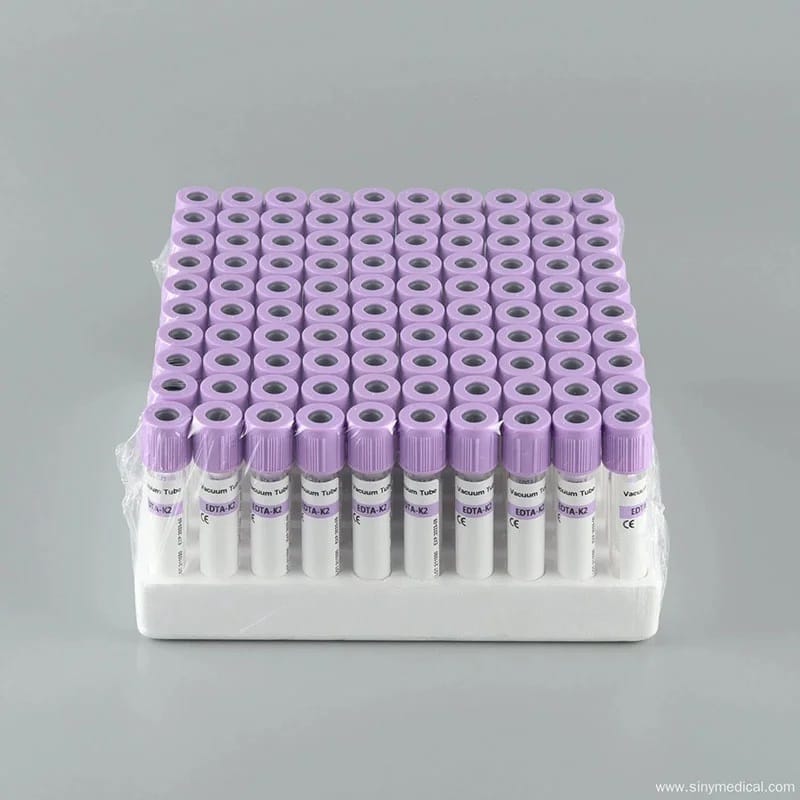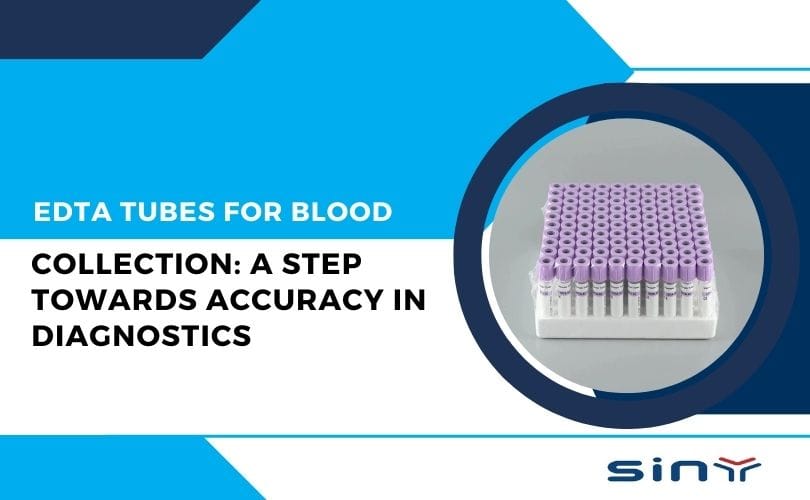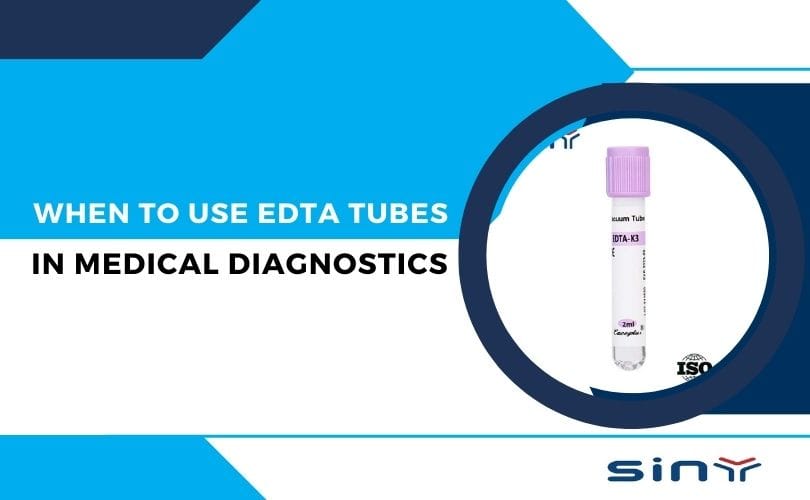Diagnostics plays a critical role in modern medicine, and accurate test results are non-negotiable when it comes to patient care. Among the many tools used in laboratories, EDTA tubes for blood collection stand out as a cornerstone for ensuring precision in testing.
What Are EDTA Tubes for Blood Collection?
EDTA (Ethylenediaminetetraacetic acid) is an anticoagulant widely used in medical laboratories to preserve blood samples. EDTA tubes are specialized blood collection tubes containing this anticoagulant. Their primary function is to prevent blood clotting, ensuring the sample remains stable for various diagnostic tests.
These tubes are specifically designed for hematology testing, where the accuracy of cell counts and morphology is paramount. The EDTA binds calcium ions in the blood, halting the clotting process and maintaining the integrity of the sample.

For more details about these tubes, visit the EDTA Tubes for Blood Collection product.
Why Are EDTA Tubes Essential for Diagnostics?
Accuracy in diagnostics depends heavily on the quality of the blood sample. Here’s why EDTA tubes are indispensable in the laboratory setting:
- Preservation of Cellular Components: EDTA ensures the cellular components of blood, like red blood cells, white blood cells, and platelets, remain unchanged during testing.
- Prevention of Clot Formation: Blood clots can interfere with test results, making EDTA tubes vital for obtaining precise data.
- Wide Application Range: These tubes are ideal for complete blood counts (CBC), blood smears, and reticulocyte counts.
- Extended Sample Stability: EDTA preserves blood samples longer than many other anticoagulants, offering flexibility for testing timelines.
Learn more about the types and applications of these tubes in the products.
Types of EDTA Tubes for Blood Collection
EDTA tubes come in different variants tailored for specific diagnostic needs. Here’s an overview of the most common types:
1. K2 EDTA Blood Collection Tubes
- Composition: These tubes use dipotassium salt (K2EDTA) as the anticoagulant.
- Application: Commonly used in hematology, K2 EDTA tubes are favored for automated blood analyzers.
- Advantages: Offers high anticoagulation efficiency and ensures accurate results.
- Learn more: K2 EDTA Blood Collection Tubes.
2. K3 EDTA Blood Collection Tubes
- Composition: Contains tripotassium salt (K3EDTA) as the anticoagulant.
- Application: Ideal for manual blood film analysis and specialized hematology tests.
- Advantages: Provides faster anticoagulation, though it may slightly dilute the blood sample.
- Learn more: K3 EDTA Blood Collection Tubes.
3. EDTA Tubes with Gel Separator
- Purpose: Combines the benefits of EDTA anticoagulation with a gel separator to isolate plasma.
- Application: Useful in both hematology and biochemistry for dual purposes.
For a complete list of EDTA tube options, explore the EDTA Tube category.
How Do EDTA Tubes Work?
The mechanism behind EDTA tubes is straightforward yet effective. Upon blood collection:
- Anticoagulation: The EDTA binds calcium ions, preventing the activation of the clotting cascade.
- Sample Stability: The blood sample remains uncoagulated, making it ideal for cell counting and morphology analysis.
- Minimized Platelet Aggregation: Platelet clumping is avoided, ensuring accurate platelet counts during hematological tests.
This meticulous process ensures that diagnostic results are both reliable and reproducible.
Applications of EDTA Tubes in Diagnostics
EDTA tubes have a wide range of applications in diagnostic testing, including:
- Complete Blood Counts (CBC): A routine test for detecting anemia, infections, and other hematological disorders.
- Blood Smears: Blood smears are used to assess cell morphology under a microscope.
- Molecular Diagnostics: EDTA-preserved blood is often used in PCR and DNA extraction processes.
- Flow Cytometry: Essential for immunophenotyping and cell sorting in research and clinical settings.
These versatile tubes are a must-have for any laboratory aiming for diagnostic accuracy.
Advantages of Using EDTA Tubes for Blood Collection
Using EDTA tubes offers several benefits that enhance the diagnostic process:
- Precision: EDTA tubes ensure accurate hematological test results by preserving cell integrity.
- Time Efficiency: Samples remain stable for extended periods, allowing flexible testing schedules.
- Wide Compatibility: They are compatible with most automated and manual diagnostic systems.
- Cost-Effective: Their versatility and reliability make them an economical choice for laboratories.
For more information on these benefits, check out the About Us page.
Proper Handling of EDTA Tubes
To ensure the accuracy of test results, it’s crucial to handle EDTA tubes correctly. Here are some key steps:
- Mixing the Sample: Immediately invert the tube 8-10 times after collection to mix the anticoagulant with the blood.
- Storage Conditions: Keep samples at 2–8°C if testing is delayed. Avoid freezing to prevent hemolysis.
- Avoid Overfilling or Underfilling: Ensuring the correct blood-to-anticoagulant ratio is essential for accurate results.
- Timely Testing: Perform tests within 24 hours for optimal accuracy.
For detailed guidance on tube handling, visit the Contact Us page.
EDTA Tubes vs. Other Anticoagulants
When compared to other anticoagulants like heparin or citrate, EDTA offers distinct advantages:
- Better Cell Preservation: EDTA maintains cellular morphology better than other anticoagulants.
- Versatility: Suitable for both manual and automated hematology analyzers.
- Less Interference: EDTA interferes minimally with biochemical assays compared to heparin.
This makes EDTA tubes a top choice for most hematological applications.
Environmental Considerations in EDTA Tube Manufacturing
Modern manufacturers are focusing on sustainable production practices. Companies like Sinymedical are incorporating eco-friendly materials and processes to minimize their environmental footprint.
Additionally, brands like EDTA Tube are committed to quality assurance, ensuring that every tube meets the highest standards.
FAQs About EDTA Tubes for Blood Collection
1. What is the purpose of EDTA in blood collection tubes?
EDTA prevents blood from clotting, preserving the sample for accurate testing.
2. Can EDTA tubes be used for biochemical tests?
While primarily used in hematology, EDTA tubes can also support certain molecular and biochemical tests.
3. How should EDTA tubes be stored?
Store at 2–8°C and avoid freezing to maintain sample integrity.
4. Are there alternatives to EDTA tubes?
Yes, alternatives like heparin and citrate tubes exist, but EDTA is preferred for hematology due to its superior cell preservation.
5. Where can I buy high-quality EDTA tubes?
Explore premium options at EDTA Tube’s Products page.
Wrapping It Up
EDTA tubes for blood collection are undeniably vital for accurate diagnostics. Their ability to preserve blood samples and ensure reliable test results makes them a cornerstone in modern medicine. Whether you’re a healthcare provider or a lab technician, choosing the right EDTA tubes is a step toward better patient care.
To explore a wide range of EDTA tubes, visit the Products page, and for any inquiries, don’t hesitate to reach out through the Contact Us page.






